Today we’re going to look at a great way of incorporating chords into your bass lines in a really simple way that also helps develop your overall knowledge of harmony and the fretboard. To do this we’re going to look at the famous intro from the song My Friend Of Misery by Metallica. The bass player is Jason Newstead and It’s from the self titled Metallica album, also called the Black Album.
My Friend Of Misery Intro
First of all let’s look at the bassline (play with a pick for authentic Jason Newstead tone)

What’s Goin’ On In There…
Now let’s look at what we actually have here with this line. We obviously have a constant drone on the open A created from the pedal point picking pattern. So the tonic of the key is being hammered at us as A.
The other chords on top are outlining the chord progression of D minor over A followed by A minor. We have a minor interval on the D, with the A underneath. That’s our D minor over A (2nd inversion D minor).
Then we have the major interval on the C which could lead you to think “Oh, so that’s a C major over A” but, if you know anything about chord construction, basic triads are built from 3 notes and remember we have the A in there too. Take that A up the octave to the 12th fret and you can plainly see the A minor chord there. So we have a Dm/A to Am chord progression.
Static Drones
One of the really cool things we can take from this line is the method of moving around with chords over a static drone. This is a great way of retaining that tonal centre while experimenting and playing around with chords within a key. So what we’re going to do is look at the basic third intervals within a major and a minor key and then run through them over an open string. This is exactly the same technique used to create that bass intro for My Friend Of Misery.
The Major Scale On One String
First let’s look at a major key. We’ll use A major just to keep in line with the previous riff. So what we need to do is learn that scale on one string. To do this you simply need to know the formula for a major scale.
Major scales are made up of a specific formula of whole steps and half steps (or tones and semitones for my European friends). A half step is one fret of distance, a whole step is two frets of distance.
The formula for a major scale is 3 whole steps and a half step then 4 whole steps and a half step. Think 3 then 4. Applied to a single D string the A Major scale is as follows:
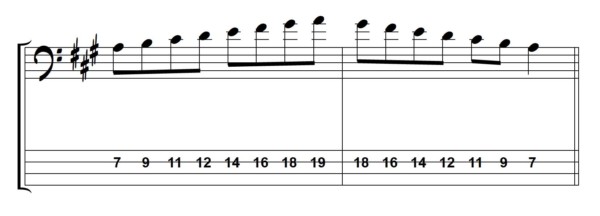
Harmonization
Once you have that major scale under your fingers you can harmonize it in thirds. Now I could sit here working through some music theory with you explaining how we go about harmonizing the scale. It’s really simple but you probably want to get straight into some playing so all we’re going to do is work through the resulting line we would have from the harmonization. So we again have a little formula to learn.
For the major scale, doesn’t matter which one, we have the following third intervals.
- I – Major
- II – Minor
- III – Minor
- IV – Major
- V – Major
- VI – Minor
- VII – Minor
Third Intervals
Now, to apply this list to our major scale, you obviously have to know a major and minor 3rd interval. Both intervals are listed here on a root note of A:
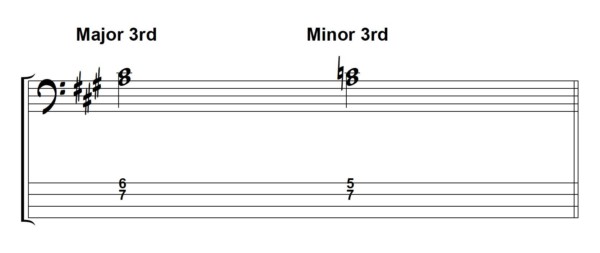
Playing Through The Major Scale
So now we have all our tools for playing thirds through the major scale. We’ll work through our list of thirds, applying them to the A major scale on the D string:
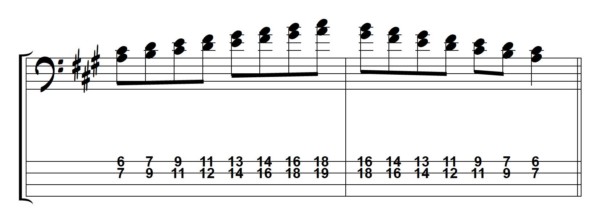
I’d advise you to just move around the neck playing around with these intervals along with an open A string drone and try making music. Be creative. You’ll hear the upper note on the G string as a melody line and the lower notes as a harmonization even though you’re probably looking at the D string as your anchor and set of way points. Just move around and go with it.
The Natural Minor Scale
So finally let’s try a minor key. My Friend of Misery is based around an A natural minor scale:
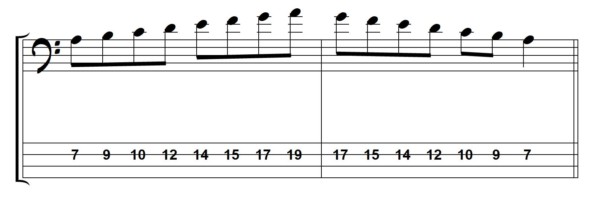
One thing to bear in mind with the natural minor scale is that it’s actually a mode of the major scale . It’s the 6th mode also called the Aeolian mode.
Now why the hell would you want to know that? Well, that means it’s exactly the same notes as it’s relative major scale starting on the 6th degree. This means we can use that exact same list of 3rd intervals we had for the major scale and simply start them from the 6th degree. So here we have our list of 3rds:
- I – Minor
- II – Minor
- III – Major
- IV – Minor
- V – Minor
- VI – Major
- VII – Major
Now let’s play through our A minor thirds:

So this is all in essence, what we have in the My Friend Of Misery. We’re moving between the third on the D and the third on the C, all over an A drone.
Now as I mentioned earlier that doesn’t necessarily mean we’re using a C major chord. All of these thirds interact with the A in certain ways giving us different chord types when we view them as triads. But that’s the beauty of using thirds in this way. We get to create fairly interesting chord progressions from highly restricted resources.

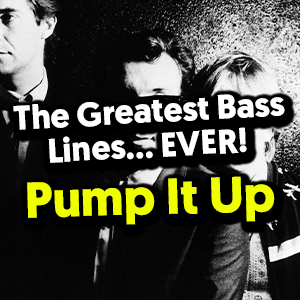











Great work,Mark.Thank you for this video.
Wow! You’ve just explained three areas of music theory that I’ve struggled with for years, minor scale harmonising, chord inversions and modes. And you’ve made it look so much easier than other internet guitar teachers do. Thank you for a great lesson.
Excellent content. Thanks a lot for your efforts and sharing.
Mark,
I am a new member to Talking Bass . Net and out of all the thousands of teachers and lessons available online you offer the best, most comprehensive material that I have come across, and the only membership that I’ve joined.
Also, I was taking lessons at a local Music store and get more from these online lessons than personal lessons so I quit going to the Music store and only using your site for my studies, which saves me time and money and get a lot more from you, so I will be sticking with Talking Bass . Net…
I am soo glad that I came across you online and growing much faster through the lessons that you offer than the private lessons I was taking.
Thank you and keep up the great work and keep posting lessons and I will continue to follow you!!!
Regards,
Mark H.
This is good stuff :)